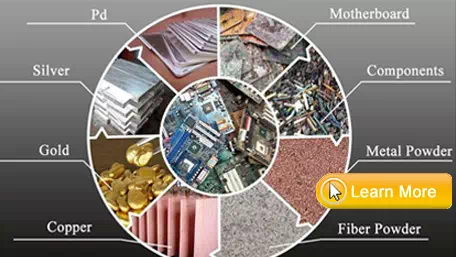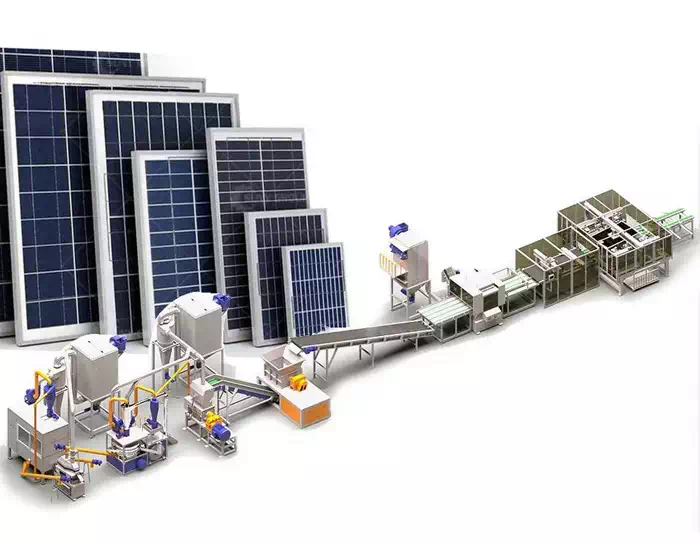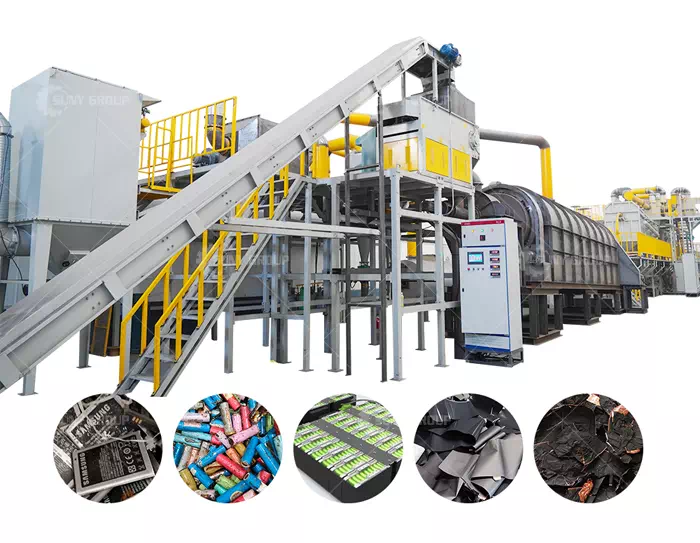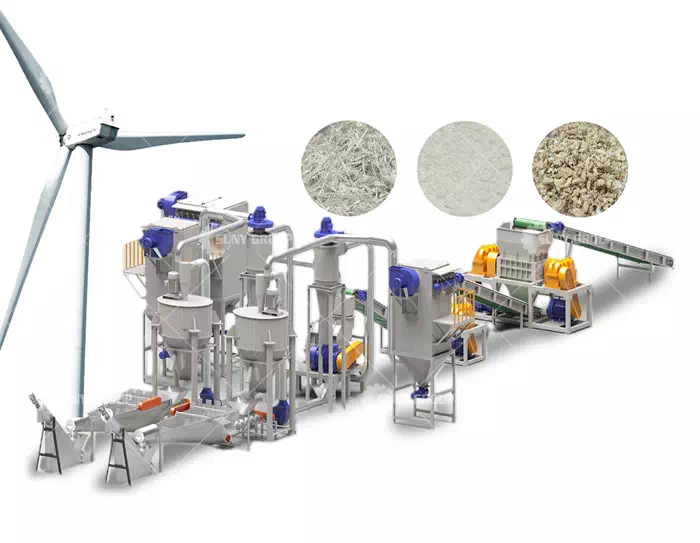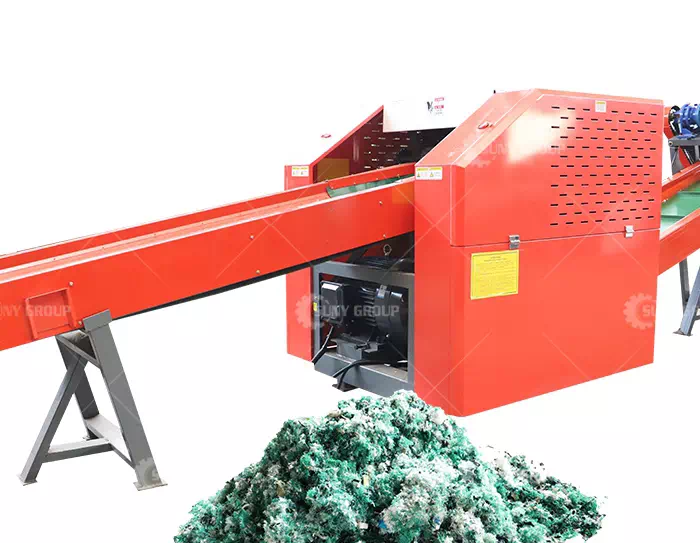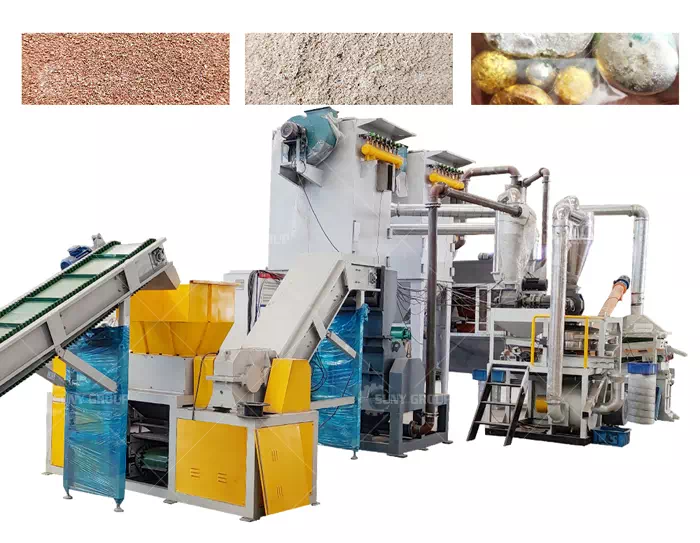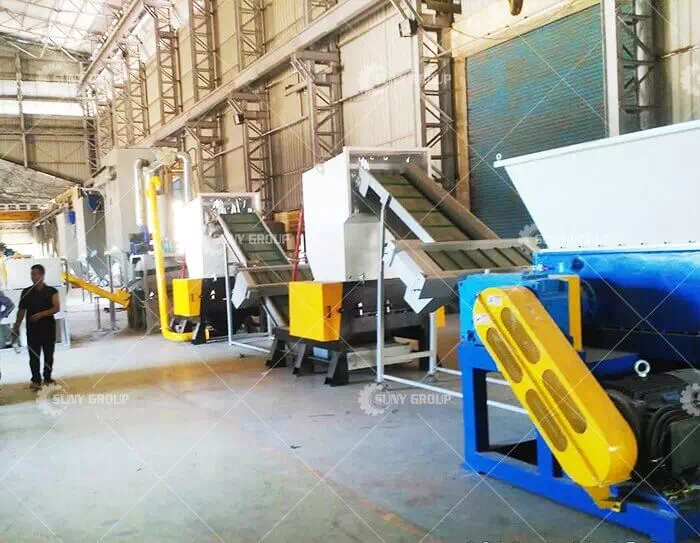WEEE recycling machinery
Waste electronic waste (WEEE) recycling is a critical process aimed at recovering valuable materials and minimizing the environmental impact of e-waste. WEEE recycling machinery plays a vital role in this process by efficiently dismantling, sorting and processing e-waste. This article provides an overview of the technologies, equipment and working principles involved in WEEE recycling developed by SUNY GROUP.
Dismantling the shredder:
The electronic waste goes through a preliminary sorting and dismantling machine, and then goes through a crusher to break down the electronic waste into smaller pieces. These machines use rotating blades or hammers to crush devices such as computers, televisions, and appliances. Crushing increases the surface area of the material, which facilitates the subsequent separation process.
Magnetic separator:
Magnetic separators are used to separate ferrous metals from electronic waste. Strong magnets can attract and separate magnetic materials such as steel, which can be further recycled. This step helps remove contaminants and improves the purity of the recycled material.
Eddy current separator:
Eddy current separators use magnetic fields to induce electrical currents in non-ferrous metals such as aluminum, copper and brass. These currents create repulsive forces that cause non-ferrous materials to be ejected from the waste stream. Eddy current separators effectively separate valuable metals for recycling.
Air separation system:
Air separation systems use technologies such as air classifiers, cyclones and air tables to separate materials based on their density and aerodynamic properties. These systems use controlled airflow to separate lighter materials like plastics and foam from heavier materials like metal.
Electrostatic separator:
Electrostatic separators are used to separate materials based on their electrical properties. The technology uses high voltage to create an electrostatic charge that attracts or repels particles. Electrostatic separators effectively separate plastic and metal particles, improving the quality of recycled materials.
Hydrometallurgical process:
The hydrometallurgical process involves using solvents and chemical reactions to extract valuable metals from electronic waste. These processes typically involve leaching, precipitation and solvent extraction steps to recover metals such as gold, silver and palladium. Hydrometallurgy complements mechanical separation methods and allows the extraction of metals from complex electronic waste.
WEEE recycling machinery uses a range of technologies and equipment to effectively process e-waste. A combination of shredders, magnetic separators, eddy current separators, air separation systems, electrostatic separators and hydrometallurgical processes enable the recovery of valuable materials while minimizing environmental impact. If you are interested in this or have any needs, please feel free to contact us for consultation.
Recommend products
CONTACT US:
If you have any requirement or suggestion, please fill in the form and send to us, thanks!E-mail:sunymachine@gmail.com | Whatsapp:+8613674945231


